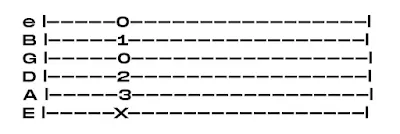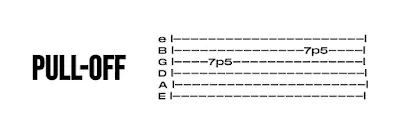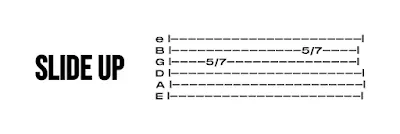How To Read Guitar Tabs | SongsChord
How To Learn To Read Guitar Tabs
Last week, we learn how to read a guitar chord chart, in today's lesson we are going to have a look at how to read the guitar tabs. Let's jump into the lesson.
How To Read Guitar Tabs?
Introduction
Wondering how to read guitar tabs? Reading tablature (aka tabs) is one of the simplest ways to learn to play the guitar particularly for those who do not understand how to read traditional sheet music. Rather than using musical notes and symbols, tab uses a combination of letters, symbols, and numbers to indicate where fingers should be on the strings and how the strings should be played.
Guitar tabs are often used to indicate chords used in songs. The tabs may come across as a little extra twisted, but knowing to read tabs is no more complicated than reading a chord chart.
While guitars come in different string numbers, this lesson is geared toward the regular six-string version. While some tab is written with the guitar tuned to something other than the standard tuning, this lesson concentrates on tabs using standard tuning.
Basics
For those new to the guitar, one of the most important parts of knowledge to understand is the names of the strings. Holding the instrument as you would while playing, you will see that the thickest string is on the top and that the strings get thinner as they go toward the bottom. Every string is named after the note it plays when strum with no frets is being held down. The thickest string is the E string, followed by A, D, G, B, and high E. As the guitar has two E strings, for this lesson the thick one will be cited as E and the thin one will be cited as e.
Tabs are set up with six flat lines that define each of the six strings on the guitar. They are set up on top and E on the bottom. Image the lines as if you were holding the guitar with the strings facing you. The thick low E string is on the bottom and the thin high e string is at the top. So as you’re looking at the strings they will read from top to bottom: e, B, G, D, A, E.
The tablature will indicate the chords and notes of music from left to right as if you were reading text. The six straight lines indicate the strings of the guitar, and the numbers are attached to each string along with the tab. An O indicates an open note, which you play without holding down a fret.
If you see numbers like 1,2, or 3, they represent the first, second, or third key you hold down. When the numbers are superimposed, they are played at the same time. The strings that do not have a number written on them are the strings that are not played at that time.
When either an X comes up on the tablature or if there is not a number listed, it is saying to the player that the specific string is not being played at all. An X could also tell that the note is played, but is being muted. For newcomers, it is best to just think that the purpose of an X is indicated to skip that string.
Basic Symbols
Guitar tabs also include symbols telling the player how to play particular notes. Here is a list of some of the important symbols you will come up against.
Hammer-On (h)
If you notice an h between two numbers, it indicates you are going to hammer on your finger at the fret listed. To do this, you will start by picking or strumming the first fret numbered. For the fret named after the h rather than just holding down the string at the fret named, you are going to use a finger to hit the string hard, much like using your finger as a hammer, to create the next note without using your picking hand.
Pull-Off (p)
This is the opposite of a hammer-on. It will be listed in the tab as p between two numbers. For this, you will position fingers at both frets named. Then, strum or pick the string and pull the higher fretted finger off while the lower fret is still held to alter between the notes.
Slide Up (/)
When the symbol / is indicated between two fret numbers, it suggests you are going to play the first fret named then, without releasing the string, slide that finger up to the next fret named to transform notes.
Slide Down (\)
Contrary to sliding up, the fret finger will slide from the first fret named down to the second fret named.
Bend (b)
The symbol b next to a fret number indicates you are going to pick the string, then bend the string with the fret finger to generate a different tone.
Palm Mute (P.M)
Palm-muting is one of the largely used techniques in Rock guitar. It is achieved by keeping the palm of your picking hand in touch with the strings as you pick them. Heavy palm muting creates a tight rhythmic sound, while light palm muting lets the notes ring out slightly more. Newcomers reading guitar music should look for the letters P.M. above the area that requires to be palm muted.
Vibrato (v) Also referred to as(~)
If either of these is indicated next to a fret number, you are going to pick the string, then use the fret finger to slightly bend the string up and down in a rapid manner vibrating the note being played.
Tapping (t)
Tapping means that the notes are being played by tapping the fingers on the fretboard. It is very much like hammering on each note as the strumming hand is not used.
Dead Notes (x)
A dead note involves holding one or more fingers over the string without pressing down and then softly picking it. This action generates a muted or muffled sound.
For a beginner tuning a guitar is difficult but here are some of the best guitar tuner apps for Android and iOS:
Downside Of Guitar Tabs
Because the tab does not tell you how long to hold a note for or how the rhythm of shifting notes should sound, it is advised to give attention to the song you are learning while working along with the tab. Get it stuck in your head and then use the tab as your fretboard map. There is a large archive of videos online that can help you to master this. Understanding to read tab will take some time to get used to, but once learned will open up an entire world of music.
Now, have fun and learn all your beloved songs, riffs, and guitar solos!
Stay Connected For The Latest Song's Guitar Chords And Lyrics. Don't Forget To Share This Post, It Helps Us Grow ☺️
Also you can contribute by submitting a song you know in the Submit Chords section or request any song which is not available here, simply going to the Request A Song section. 🙂
Enjoyed this post? Never miss out on future posts by following us!



















